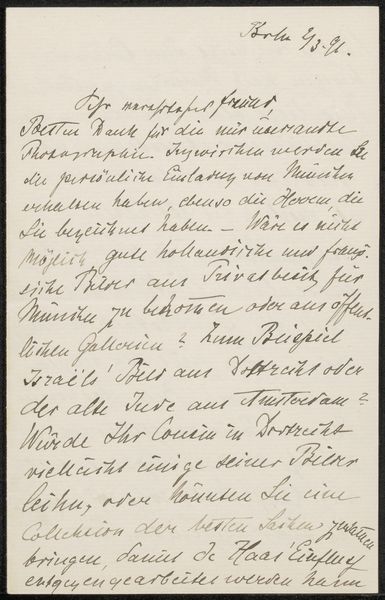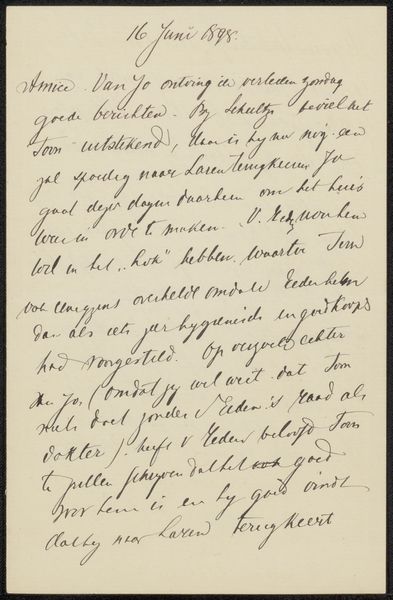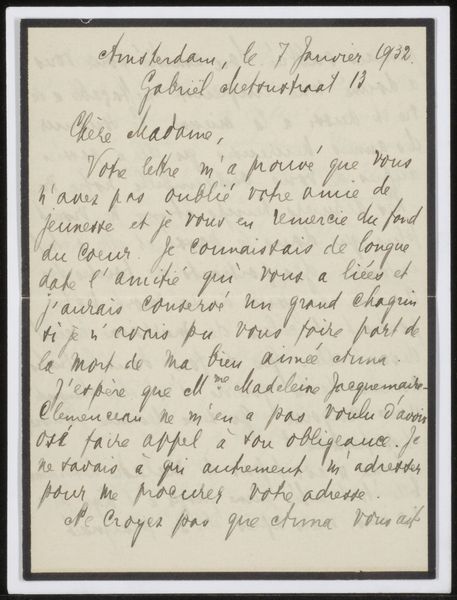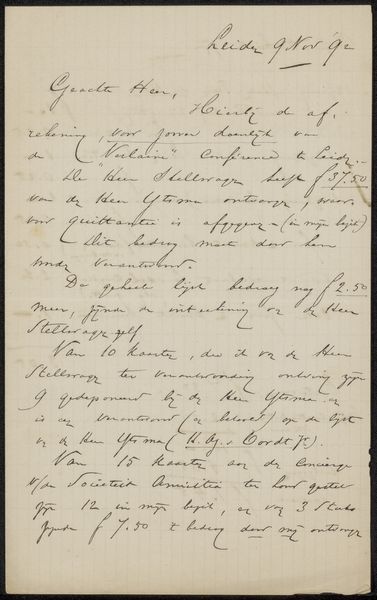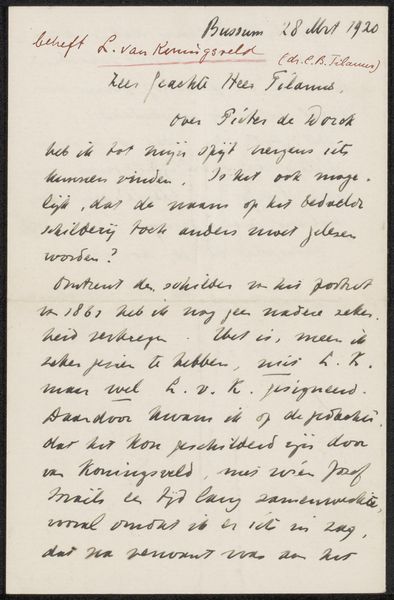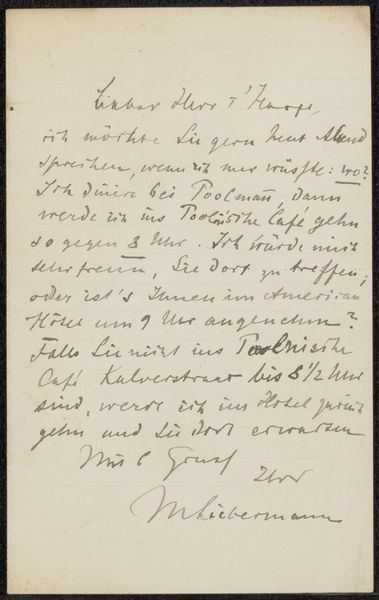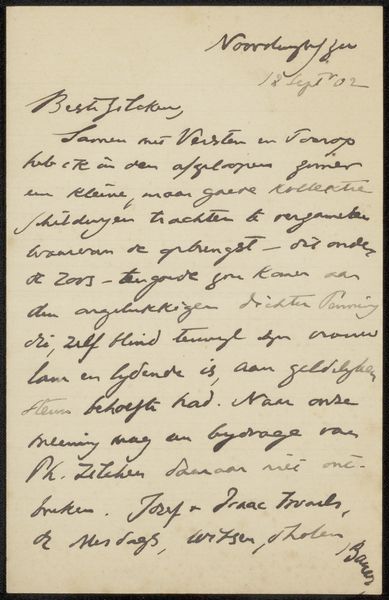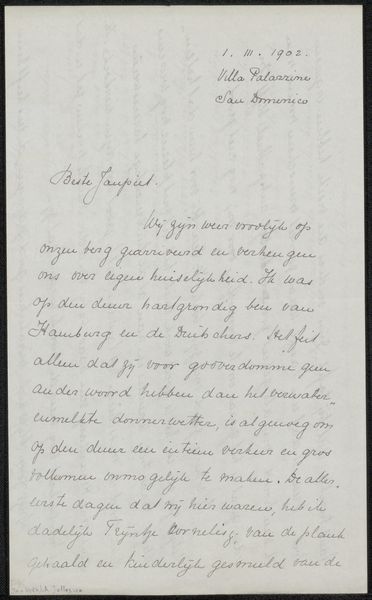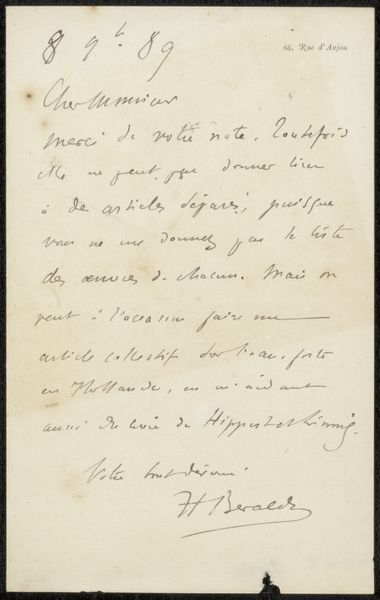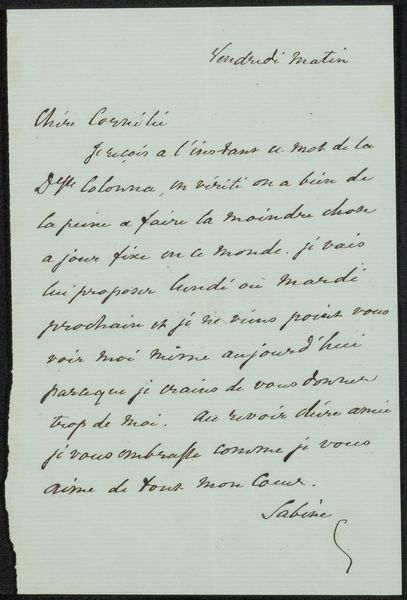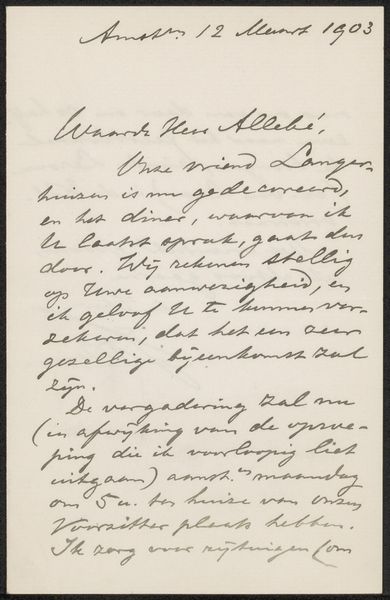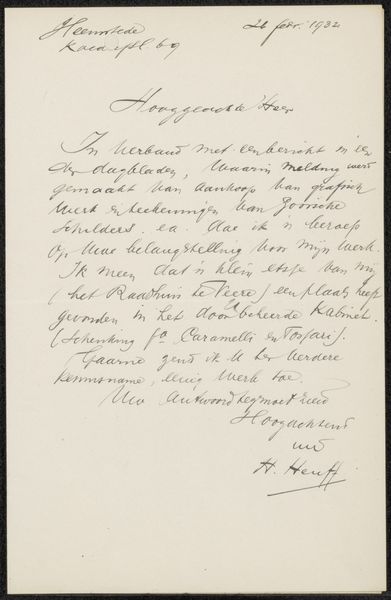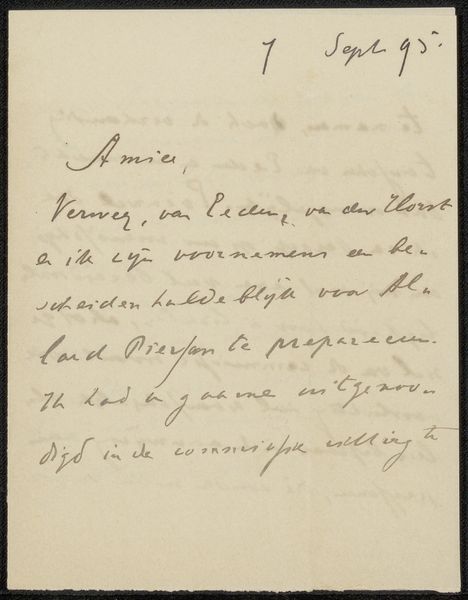
drawing, paper, ink
#
portrait
#
drawing
#
dutch-golden-age
#
paper
#
ink
Copyright: Rijks Museum: Open Domain
Curator: This ink drawing on paper is entitled "Brief aan Jan Veth" and it is attributed to Alphons Diepenbrock, dated sometime between 1905 and 1915. What strikes you first about it? Editor: The labor! Look at the pressure involved to transfer this text onto the page by hand! Each mark is not merely an instance of writing, but a conscious, crafted decision made by a person. Curator: Absolutely. There is such intimacy present through the handwriting itself. The letter allows us to see into the networks and thought processes circulating among artists and thinkers during that time. You almost feel like you’re eavesdropping. Editor: Well, it certainly raises questions about literacy, labor, and how easily available letter-writing was in that era. Was writing a luxury afforded to few? What was the culture of handwritten correspondence then? Curator: That’s a key point! Examining the act of correspondence at that time shows the power dynamics involved in sharing ideas through such material means. How easy or difficult would it have been to communicate that way, and what effect did that access or lack of access have on shaping the artistic discourses? Editor: Yes, who could engage and what controlled the consumption and distribution of ideas. Looking at the support—the paper, the ink, the creation and transmission of the thing itself—gives me more context and understanding of how people communicated. Curator: I think viewing a letter—this form of intimate communication—as both a work of art and a cultural artifact challenges notions about whose voices matter. Editor: By carefully evaluating the historical materials and conditions, it also exposes potential class dynamics that affected this artwork. Curator: Precisely. It goes beyond simply aesthetic value and becomes a piece loaded with social commentary. It is interesting how something so simple can provide that lens. Editor: Thinking of artistic creation in those terms gives greater depth. This is more than a pretty drawing. Curator: Absolutely! Focusing on Diepenbrock's handwritten letter is to invite considerations about personhood and class in relation to the transmission of information.
Comments
No comments
Be the first to comment and join the conversation on the ultimate creative platform.
